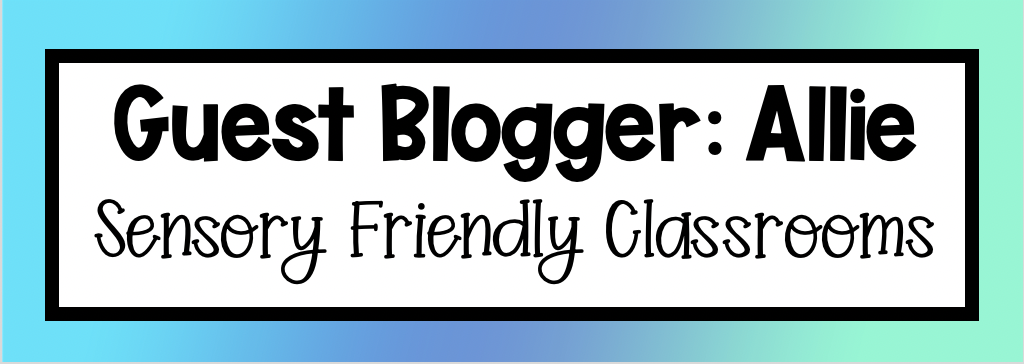I am excited to introduce this week’s guest blogger, Allie from Miss Behavior to talk all about sensory friendly classrooms!

Sensory friendly classrooms are ALL the rage. Let it be known, this is not a passing fad. We ALL have sensory systems! This is one of the main reasons why I am super passionate about classrooms being sensory friendly. While we of course have students with the diagnosis of sensory processing disorder, and other diagnosed needs that warrant extra attention towards sensory stimuli, a sensory sensitive classroom benefits everyone!
A sensory friendly classroom is a way that all students can more effectively process sights, sounds, and experiences in the classroom. It’s important to know that having a classroom that supports all of your students’ sensory needs isn’t another long project or big task to add to your already long list. These 5 tips will help you, SIMPLY, make your classroom even just a little bit more sensory friendly.
I love a good calm corner! I truly believe that a calming space belongs in every classroom in every school. Having a space for students to visit that provides some calm from the overwhelm that can occur across the school day. That’s really sensory friendly! What I hear as the biggest barrier to implementing calm corners is the concept of students misusing it. That is the REALITY, and believe me, I get that.
I can’t guarantee that a calm corner won’t be used for the wrong reasons, but what I do know, is that our students succeed with expectations. When we set them up with discussions, visuals, boundaries, and modeling, it CAN work.
Our students like to stand! Wiggle! Pace! Rock! You already know this, and I realize this can be a total distraction for some teachers. However, we can all support students’ learning and sensory needs AND teach effectively. For some students, having a seating support can be the key to success. This could be a wobble stool, a kick band, or a standing desk. I know the barrier here is often the cost. Have you tried Donors Choose? It’s worth a try!
Having scheduled breaks is SO helpful for students. Giving students the assurance that regardless of behavior, work completion, or other factors of the day, they will have breaks at scheduled times. It’s natural that some students will need more break time than other students.
Don’t forget that having scheduled breaks for everyone is truly sensory friendly. When we add break times to the class schedule, students know when they are coming in the day. This can allow you to say, “We have a break coming up next!” so students can know how to save their energy and pace themselves until they reach break time.
During certain activities, the noise level might be louder or softer, and lights might be dim or bright. Announcements and alarms, walkie talkies, AAC devices, beeping medical tools, they can all be found in our classrooms. While many students will not be distracted or sensitive to these experiences, we know that many will be. Be mindful of this and take note. Things like noise cancelling headphones, light filters, social scripts, and visual/verbal warnings can help.
When you teach kids how to use sensory tools appropriately and effectively, they can and will be game changers. Classrooms are emotional places. Having sensory tools available for all students as needed will allow for students to get their needs met wherever they are on that day. Sensory tools that work for each child will need to be differentiated. Good thing we are all super familiar with that concept! Some students need visual stimulation, while others may respond to a stress ball. Vary your resources so students can all get what they need!
Instagram | TeachersPayTeachers | Facebook | Boom Learning Library | Pinterest
What are you looking for?
COPYRIGHT © 2025 Full SPED Ahead